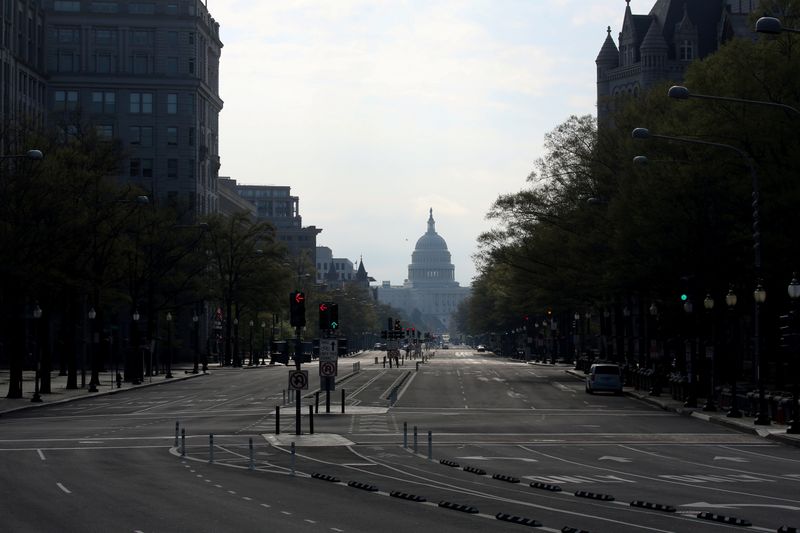By Michelle Price
WASHINGTON (Reuters) - The U.S. government's $350 billion program to help ailing businesses took an important step forward on Wednesday, with the launch of a system that will allow hundreds of new lenders to participate in the unprecedented scheme.
Lenders that have never previously registered with the Small Business Administration (SBA) could start to do so through the new online portal, addressing one of several problems with the scheme that banks say have delayed getting much-needed funds to customers.
The Treasury also issued new guidance on Wednesday to help address lingering questions over the terms of the loans, including confirming that banks could use their own promissory note when issuing funds to customers, which had been a source of major confusion.
Also on Wednesday, the U.S. Federal Reserve said it would "temporarily and narrowly" modify a ceiling it imposed on Wells Fargo & Co's (N:WFC) balance sheet in 2018, so the country's fourth-largest lender can make more loans under the program.
"Good news! Significant increase today in the number of lenders & loans... Daily improvement continues & will accelerate as Treasury guidance has provided more clarity," tweeted Republican Senator Marco Rubio, who has been pushing the SBA and Treasury, which are jointly administering the program, to fix a number of snags.
Launched on Friday as part of a $2.3 trillion congressional economic relief package, the $350 billion program allows small businesses hurt by the coronavirus pandemic to apply for government-guaranteed loans with participating banks. Those loans will be forgiven if they are used to cover payroll costs, subject to some conditions.
As of Wednesday afternoon, more than $100 billion in funds had been authorized, according to a senior administration official, although neither the Trump administration nor the banking industry had data on how much of that had been disbursed to businesses, Reuters reported on Tuesday.
Getting the funds out the door quickly is crucial, since half of small businesses have less than a two-week cash capital buffer, according to estimates by JPMorgan (NYSE:JPM). But that haste has led to confusion and technology glitches, which have sparked widespread frustrations among bankers and businesses alike and left the administration scrambling to fix problems on the fly.
One key outstanding item lenders were still waiting for on Wednesday afternoon was a formal loan authorization form - the last piece of the paperwork puzzle required for money to be handed to the customer. The form that lenders had initially been using turned out to be incorrect, and a new form had yet to be issued, according to three banking sources.
Without that paperwork, banks worry loans may not qualify down the line for the government guarantee, or for forgiveness, the sources said, and many have been reluctant to release the funds as a result, Reuters reported on Tuesday.

The senior administration official declined to comment on when the authorization form would be released.